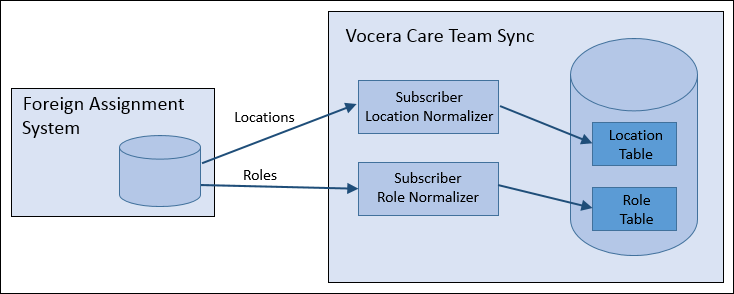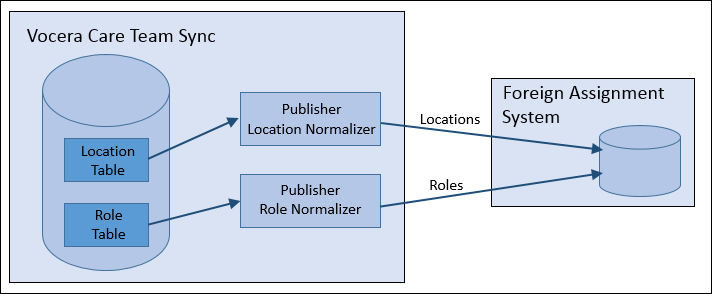Connection normalizers share a number of features with unit normalizers. Similar to unit normalizers, connection normalizers process groups into their role and location components; both types of normalizers also use the same XML markup. The overall purpose of connection normalizers is different from that of unit normalizers, however. Whereas unit normalizers take Vocera groups as input and provide normalized role and location output for the CTS database, connection normalizers transform role and location data from the convention used by the foreign end point to the CTS convention, or vice versa.
When CTS is the source of truth, it is the publisher of assignments; when the foreign end point is the source of truth, CTS is the subscriber. Consequently, a publisher normalizer transforms either CTS roles or locations into the role or location representation required by the foreign end point. A subscriber normalizer transforms the foreign roles or locations into the representation required by the CTS.
The following diagram shows the relationship between CTS and the foreign clinical assignment system when the foreign system is the source of truth.

The following diagram shows the relationship between CTS and the foreign clinical assignment system when CTS is the source of truth.

